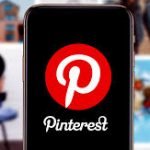Introduction.
If you’re trying to market your business online, chances are you’ve already considered Facebook. But have you thought about using Facebook Groups for marketing?
If not, you’re missing out on one of the most powerful, yet underrated, tools in the social media marketing world.
Let’s face it—Facebook Groups are often overlooked in favor of other marketing tactics, but when used right, they can be a game-changer.
Groups give you the chance to connect with people who are genuinely interested in what you do. It’s a space where you can create real, authentic conversations with your audience—something that’s harder to do on more public platforms like Facebook Pages or Instagram.
So, why should you bother with Facebook Groups for marketing? Well, statistics show that over 1.8 billion people engage with Facebook Groups each month.
That’s a massive audience! Plus, 78% of Facebook users say they’re part of a group, and 49% of them say they are more likely to buy from a business that has a Facebook Group.
Those are some seriously compelling reasons to start thinking about how you can make Facebook Groups work for you.
In this guide, I’ll walk you through everything you need to know about using Facebook Groups for marketing, from setting up your own group to engaging with members and turning those interactions into sales. By the end, you’ll be ready to take full advantage of Facebook Groups to grow your business.
What’s So Great About Facebook Groups for Marketing?
Let’s break it down. Facebook Groups give you a unique opportunity to directly engage with a community of people who already have some level of interest in your business or industry.
Unlike public posts on your Facebook Page, which can easily get buried in the algorithm, posts in a Group get a lot more visibility because they’re targeted at people who’ve already chosen to be part of your community.
But it’s not just about visibility. People join Facebook Groups because they want to connect with others who share their interests.
This gives you the chance to build trust, offer value, and even position your business as a helpful resource.
A Facebook Group isn’t about hard selling—it’s about building relationships. When people feel like they know, like, and trust you, they’re way more likely to buy from you when the time is right.
Step 1: Create Your Facebook Group
Creating a Facebook Group is pretty straightforward, but there are a few key things to keep in mind to make sure it’s set up for success.
- Choose Your Group’s Purpose: Before you even hit “create,” think about the reason you want the group to exist. Are you looking to build a community of people who are interested in your products? Or maybe you want to offer a space for people in your industry to share advice and tips. Knowing your purpose will help you shape the tone and direction of the group.
- Pick a Clear Name: Your group name should be clear and specific so that potential members know exactly what they’re joining. For example, “Healthy Recipes for Busy Moms” is more effective than just “Healthy Recipes.”
- Set Clear Rules: It’s a good idea to have some basic ground rules for behavior within your group. This keeps things running smoothly and makes sure people feel comfortable. Rules might include things like no spamming, respect for others, or posting only relevant content.
- Decide on Privacy Settings: Facebook lets you choose between a public, closed, or secret group. For marketing purposes, a closed group is often best, as it allows members to join, but the content inside is private, meaning only group members can see posts.
- Design Your Group’s Visuals: Your group’s banner image should match your brand and make it clear what your group is about. It’s the first thing potential members see, so make it count!
Step 2: Fill Your Group with the Right People
Now that your group is set up, it’s time to get members. But, here’s the key: you don’t just want any members, you want the right members. These are people who are genuinely interested in what you have to offer.
- Promote Your Group on Your Facebook Page and Other Social Media: Share the link to your group on your Facebook business page, Instagram, Twitter—anywhere your audience hangs out. Let them know what they can expect from joining.
- Use Paid Ads to Attract Members: If you’re ready to invest a little money, you can run Facebook ads that direct people to your group. This is an effective way to grow your group quickly and target people who fit your ideal customer profile.
- Leverage Partnerships: Partnering with other businesses or influencers in your niche can be a great way to introduce your group to a wider audience. Maybe you run a joint event or offer a special deal to people who join.
- Invite Existing Customers or Fans: If you already have a customer base, invite them to join your group. They’re already familiar with your business, so they’re more likely to become active members.
Step 3: Create Engaging, Valuable Content
Once people start joining your group, the next step is to keep them engaged. A Facebook Group can quickly lose its momentum if there’s nothing interesting to talk about, so you’ve got to provide content that’s valuable to your members.
- Share Expert Tips and Insights: Share valuable information that your members will appreciate. This could be anything from industry news to “how-to” guides related to your products or services.
- Ask Questions: People love to share their opinions. Ask questions that prompt discussions. This will help create a community vibe and encourage people to interact with your posts.
- Host Polls, Challenges, or Contests: Interactive content like polls or challenges can increase engagement and give people a reason to check in regularly. Plus, they’re fun!
- Live Videos and Webinars: Facebook Live is a great way to engage with your community in real-time. Host Q&A sessions, tutorials, or behind-the-scenes tours of your business.
Step 4: Nurture Relationships and Build Trust
The key to using Facebook Groups for marketing isn’t about pushing your products at every turn. Instead, it’s about building trust with your members.
- Be Present: Be active in your group. Respond to comments, answer questions, and start conversations. People want to see that there’s a real person behind the group—not just an automated bot.
- Offer Exclusive Deals: One great way to build loyalty is to offer group members special discounts or early access to new products. This makes people feel like they’re part of something exclusive.
- Showcase Your Products Softly: Instead of constantly promoting your products, find subtle ways to weave them into the conversation. Share customer testimonials, success stories, or how your products have made a difference for others.
- Encourage User-Generated Content: Encourage members to share their own experiences with your products. This can be a powerful form of social proof that can inspire others to make a purchase.
Step 5: Track Your Group’s Success
It’s important to keep track of how your Facebook Group is performing. Look at metrics like engagement rates, how often people comment or post, and how many new members you’re adding. Facebook provides insights for group admins, which can help you gauge whether your group is growing and what’s working (or not working) in your strategy.
FAQs:
- Do I need a Facebook Page to create a Facebook Group? Yes, you need to have a Facebook Page to create a group. However, the group will operate separately from your page.
- Can I sell directly in my Facebook Group? While selling in your group should be subtle, it’s okay to promote products occasionally. Just remember that the focus should be on providing value first and selling second.
- How can I get more members to join my group? Promote your group across other social media platforms, run ads, and encourage existing customers to join.
- What’s the best time to post in my Facebook Group? The best time varies based on your audience, but generally, posting in the evenings or weekends tends to get more engagement.
Conclusion.
Facebook Groups are an incredibly powerful tool for marketing, but only if you approach them with the right mindset.
It’s not about immediate sales—it’s about building a loyal community, fostering real relationships, and offering value.
The question is, are you ready to put in the time and effort to make your Facebook Group a thriving space for your business?





GIPHY App Key not set. Please check settings